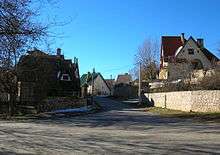Hill station






.jpg)
.jpg)




A hill station is a town located at a higher elevation than the nearby plain or valley. The term was used mostly in colonial Asia, but also in Africa (albeit rarely), for towns founded by European colonial rulers as refuges from the summer heat, up where temperatures are cooler. In the Indian context most hill stations are at an altitude of approximately 1,000 to 2,500 metres (3,500 to 7,500 feet); very few are outside this range.
History
Hill stations in India were established for a variety of reasons. After the revolt of 1857 the "British sought further distance from what they saw as a disease-ridden land by escape to the Himalayas in the north and Nilgiri Hills in the south", a pattern which started even before 1857. Other factors included anxieties about the dangers of life in India, among them "fear of degeneration brought on by too long residence in a debilitating land." The hill stations were meant to reproduce the home country, illustrated in Lord Lytton's statement about Ootacamund, in the 1870s, "such beautiful English rain, such delicious English mud."[1] Shimla was officially made the "summer capital of India" in the 1860s and hill stations "served as vital centers of political and military power, especially after the 1857 revolt."[2]:2
Dane Kennedy, following Monika Bührlein, identifies three stages in the evolution of hill stations in India: high refuge, high refuge to hill station, and hill station to town. The first settlements started in the 1820s, primarily as sanitoria. In the 1840s and 1850s, there was a wave of new hill stations, with the main impetus being "places to rest and recuperate from the arduous life on the plains". In the second half of the 19th century, there was a period of consolidation with few new hill stations. In the final phase, "hill stations reached their zenith in the late nineteenth century. The political importance of the official stations was underscored by the inauguration of large and costly public-building projects."[2]:14
List of hill stations in the world
- This list is incomplete; you can help by expanding it.
Most hill stations are located in Asia:
Africa
Madagascar
Morocco
Nigeria
Asia
Bangladesh
Burma
Cambodia
China
Hong Kong
India
Hundreds of hill stations are located in India. The most popular hill stations include:
- Araku Valley, Andhra Pradesh
- Chirmiri, Chhattisgarh
- Dalhousie
- Dhanaulti
- Darjeeling, West Bengal
- Pachmarhi
- Gangtok
- Gulmarg
- Jorhat
- Kangra
- Khajjiar
- Kodaikanal
- Lonavala - Khandala
- Mahabaleshwar
- Matheran
- Manipal
- Manali
- Mount Abu
- Munnar
- Mussoorie
- Nainital
- Ootacamund ('Ooty')
- Rishikesh
- Shimla
Indonesia
- Garut in West Java
- Puncak in West Java
- Batu in East Java
- Kaliurang in Central Java
- Sukabumi in West Java
- Munduk in Bali
- Bedugul in Bali
- Berastagi in North Sumatra
Iraq
Malaysia
- Cameron Highlands
- Fraser's Hill
- Genting Highlands—founded following Malaysian independence
- Maxwell Hill
- Penang Hill
Nepal
- Pokhara
- Namche Bazaar
- Bandipur
- Dhulikhel
- Tansen
- Nagarkot
- Gorkha Bazaar
- Daman
- Dharan
- Dhankuta
- Illam
- Lumle
- Kaande
- Sarangkot
- Baglung
- Jomsom

- Dingboche
- Kunde
- Khumjung
- Lukla
- Tengboche
- Phortse
- Bhimeshwar
- Besisahar
- Sandhikharka
- Tamghas
- Jomsom
- Thame
- Pangboche
- Phakding
- Simikot
- Dunai, Nepal
Pakistan
Khyber Pakhtunkhwa
Punjab
Sindh
Balochistan
Gilgit Baltistan
Philippines
Sri Lanka
Syria
Vietnam
Europe
Cyprus
Oceania
Australia
References
- ↑ Barbara D. Metcalf; Thomas R. Metcalf (2002). A Concise History of India. Cambridge University Press. p. 111. ISBN 978-0-521-63974-3.
- 1 2 Kennedy, Dane (1996). The Magic Mountains: Hill Stations and the British Raj. Berkeley: University of California Press. Retrieved 19 Aug 2014.
Bibliography
- Crossette, Barbara. The Great Hill Stations of Asia. ISBN 0-465-01488-7.
- Kennedy, Dane. The Magic Mountains: Hill Stations and the British Raj (Full text, searchable). Berkeley: University of California Press, 1996. ISBN 0-520-20188-4, ISBN 978-0520201880.
External links
| Look up hill station in Wiktionary, the free dictionary. |



